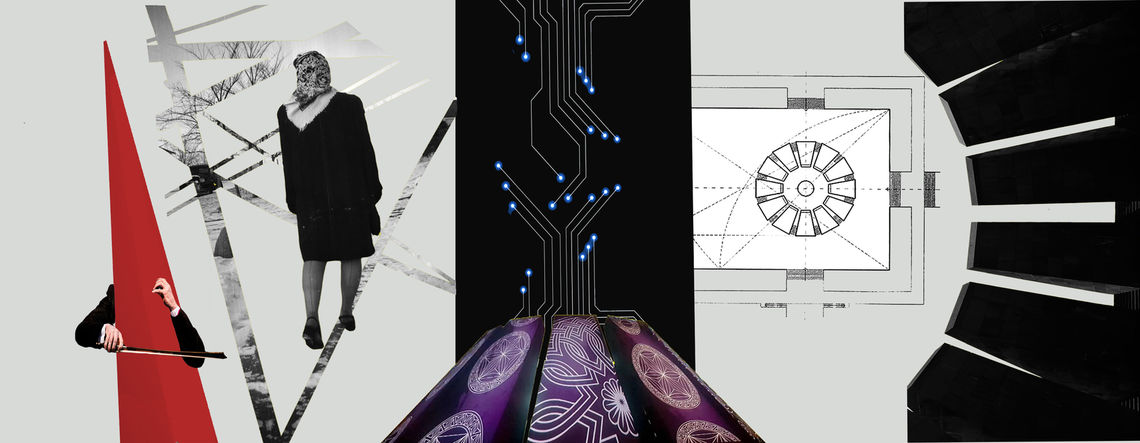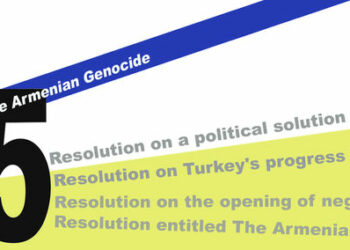
Exactly two years ago, on the 103rd anniversary of the Armenian Genocide, an alignment of events heralded a new historical epoch for the Armenian people. A day before, on April 23, 2018, the long-reigning head of state, Serzh Sargsyan announced his resignation in what was the culminating moment of Armenia’s “Velvet Revolution.” At the time, many believed that the onset of April 24 commemorations played a decisive role in Sargsyan’s decision, as it offered an opportunity to unleash an even larger wave of protest that would be impossible to contain. Sargsyan’s dethronement became a cause for nationwide celebrations, thus radically transforming the symbolic significance of the march toward the Genocide monument in Yerevan. The thousands who queued for hours to lay flowers at the memorial were no longer victims or descendants of survivors, but a people who had mustered their collective will to achieve a victory against injustice and oppression. Instead of grief, the atmosphere was filled with triumph – a triumph of willing historical change into being. In many ways, that procession was a sign that Armenia had finally evolved into a true civic society a century after its people (including the country’s minorities like the Assyrians and Yezidis) were brought to the brink of extinction.
Nobody could have predicted that the 2020 commemorations would once more turn into the site and the “medium” for yet another profound transformation. This time, however, the scene was a dramatic anthesis of the earlier occasion. Cordoned off to the public due to quarantine measures, the Genocide monument was—for the first time since its erection in 1965—barred to the crowds. Instead, people were asked to pay their respects “virtually” by texting their names to a designated number, to have them projected upon the pillars of the monument by specially-designed software. The process would be televised live, accompanied by a lengthy concert following official visits by state leaders. An outrageous idea, surely. But what seemed like an irresponsibly glib approach to the most important national day of remembrance unexpectedly evolved into a stirring showcase of solidarity, technological innovation, an impressive display of Armenian performing arts and the remarkable talents of local performers.
It was all packaged as an almost faultless spectacle framed by a stunning lighting design. The digital names slowly slid into the beam of blue light and extended to the heavens, making the Swallow’s Fortress (Tsiternakaberd) appear like a climactic scene from a Marvel movie. But all aspects of the programming—the choreographed walk of the Prime Minister and First Lady, the beautiful and surprisingly diverse musical numbers, the informative and reserved commentary by the event’s off-screen presenters—coalesced into a genuinely moving mass media event. In fact, it was so well-scripted that the commotion caused by an 82-year-old grandfather’s “intrusion” fit the proceedings like an ingenious plot twist. Watching from the comfort of their self-isolated domains, the public was clearly captivated as evidenced by the outpouring of gratitude toward the organizers on social networking sites. Far from undermining the memorial day, the socially-distanced, high-tech interactive tribute presented this annual event as a true Ritual.
Why is this important? Since its semicentennial, April 24 has been a ritual, the one focal point that united all the world’s Armenians. And yet, the commemorative marches often left an impression of a graceless pilgrimage, a procession with little meaning aside from the doctrine of victimhood and jingoistic nationalism. This crude approach to historical memory and mourning reached its apogee during the Genocide’s Centenary. The forget-me-not flower was used as a meta-symbol in a particularly trite attempt to condense the great tragedy into a simplistic logo-label to be reproduced as bumper stickers and badges. Far from evoking the gravity of the event, the symbol became an empty sign that merely “automated” the process of identification, alleviating the burden of reflection upon the still unresolved issues of post-Genocide traumas. In this sense, it was the exact opposite of rituality with its conditions of carefully orchestrated gestures, allegorical narratives and symbolic sequences that invoke a set of beliefs and ideas across time.
The 2020 commemoration made a fundamental break with these earlier “traditions” by reconstituting the day of remembrance into a properly orchestrated rite. This was evident not only in the day-long program with its prudently chosen texts and excellent repertoire of classical and modern musical performances. A two-minute video clip transformed the visits of the ten regional governors, the mayor of Yerevan and the High Commissioner for Diaspora Affairs to the Genocide monument into a metaphorical incantation of a medieval royal ceremony. It seems redundant to state the significance of such symbolic rituals within the operating mechanisms of nation-states. As the French sociologist Pierre Bourdieu claimed in 1982, the ritual is an institutional device that performs “acts of social magic” and the “miracle” produced by these institutional acts is to make “the consecrated individuals believe that they are justified to exist, that their existence serves something.” This is precisely what happened two nights ago, as the ceremony transcended lamentation to engender a feeling of shared pride.
All developed nation-states have such common investment in elaborate rites that manifest the “body” of the state and reaffirm the belief in its efficacy and ideology. This is why many Western nations still retain their monarchs as the best performers of “social magic.” The ritualization of the Genocide commemoration day also fulfilled this vital function on a level that is incomparable with previous tributes. It enabled an articulation of the “national” discourse according to the rhetoric of the current government (and hence, the people who have elected it). More than just a “tasteful” or “visually sublime” ceremony, it communicated dominant ideological and political imperatives through strategically selected formal and symbolic frameworks, making legible the axis around which the relationship between history, the government and the citizen revolves. In manifesting ideology, the commemoration also exposed it as a text that can be read, critiqued and reshaped.
Enabling the connectedness of the Armenian people across closed borders, the ceremony once again became an arena for staging a collective victory over the vagaries of history. Focusing on the idea of historical justice through dialogue and diplomacy, the event also foregrounded intellectual production and technological innovation as formative aspects of the nation’s collective identity and its main tools of resistance. These were statements of fundamental import, since they realigned earlier paradigmatic vectors based on more mercantile models. What we saw was a demonstration of a developing “high culture” instead of parochial assertions of martyrdom. At the same time, the ceremony vividly displayed the state’s commitment to patriarchal values and the subconscious monarchist fantasies of the people, as enacted by the video clip of the all-male coterie of governors assembling around the eternal flame of the monument like reincarnated knights of Armenia’s medieval kingdoms.
But the conservative political schema is a secondary issue. Rituals are inherently ideological and their function is to invoke society’s cryptic systems for affirmation, critique or reform. What makes this transaction possible, naturally, is form. Ironically, the quarantine measures enabled the Genocide ceremony to be repurposed into a visual spectacle with a properly conceptualized design. Our physical absence from the event served to underline the ceremony as an “Idea” that could be viewed, recorded and understood as a set of intricate images and signs. This process of embodiment, of giving shape to grief and remembrance has been a pernicious issue in our constant battle to speak about the Genocide. We’ve been melancholically resuscitating this event in the present, instead of trying to deal with its finality and tragic aftereffects. This is why, perhaps, the quest to “represent” the unpresentable horror of the past in Armenian visual culture—especially cinema—has repeatedly faced failure, meanwhile, self-analytical attempts such as Atom Egoyan’s Ararat have been met with widespread misunderstanding. The forced detachment of April 24, 2020, brought an essential degree of cerebral contemplation that allowed us to meditate upon our loss, but also see the many ways that we’ve managed to (and continue to) overcome it. Such is the enduring relevance of April 24 as each of its iterations becomes an opportunity for renewal and change.
Also read
The European Record on Recognizing the Armenian Genocide
Anna Barseghyan looks back at Europe’s record on the recognition of the Armenian Genocide and writes that as long as new genocides are happening across the world, the Armenian question remains contemporary.
Read more

